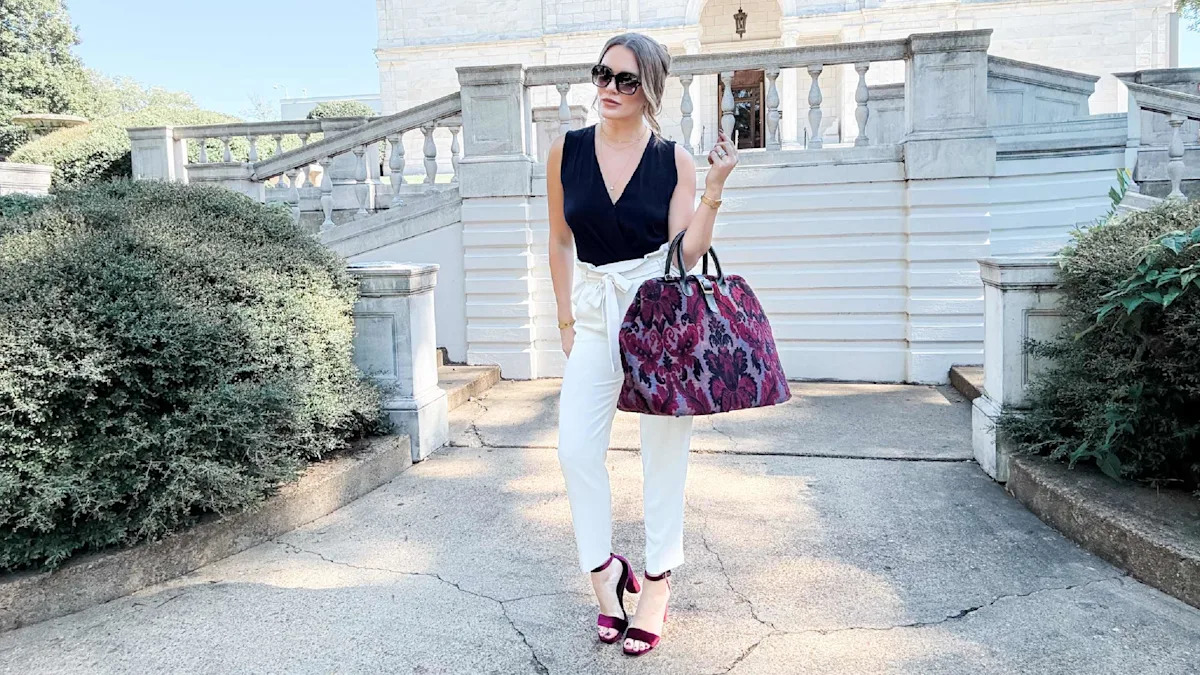I caught my reflection one morning and recognized something I hadn’t wanted to see—not that I looked bad, but that I looked like I was quietly disappearing. My clothes were sending distress signals I couldn’t consciously hear. Everything I wore whispered the same truth: I’m just trying to make it through.
Survival mode dressing isn’t about looking messy. It’s subtler—when clothing becomes armor against a world that feels too demanding, when every outfit choice prioritizes protection over expression. The clothes still “work,” but they’re working overtime to hide how hard everything else has become.
1. The same black leggings every day
They’re not athletic wear anymore—they’re a uniform for existing. Comfortable, forgiving, requiring zero thought. They go with everything because they have to. Washed at night, worn tomorrow, a textile security blanket that asks nothing from you.
I lived in two pairs for months, calling it practical. But decision fatigue in clothing reveals something deeper—when life overwhelms, even choosing pants feels impossible. The leggings weren’t a choice; they were the absence of having to choose.
2. Hair always in the same bun
Not styled, not messy-chic—the automatic bun that happens when you gather hair and twist. Same spot, same elastic losing elasticity. Your hands know the motion without your mind’s involvement.
This goes beyond efficiency into autopilot. It’s been so long since your hair was truly down, it’s forgotten how to fall naturally. What looks like a hairstyle is really hair in waiting mode—waiting for energy that never quite arrives.
3. The oversized cardigan that never comes off
Living on the back of a chair between wears, more blanket than clothing. It wraps around you like portable comfort. The pockets hold tissues and receipts, the sleeves stretched from nervous pulling.
That cardigan is doing emotional labor clothing shouldn’t have to do. It’s providing the comfort you’re seeking everywhere else. When clothing becomes emotional regulation, your wardrobe transforms into a coping mechanism you wear.
4. Jewelry that stays on for weeks
The same earrings, same necklace—worn so long they’ve become part of you. You sleep in them, shower in them, forget they exist until someone mentions them and you can’t remember when they went on.
This permanent jewelry isn’t laziness—it’s one less daily decision. Taking them off means putting them back on, and that’s one transaction too many. They’ve stopped being accessories and become fixtures, as permanent as freckles.
5. The bra that doesn’t match
Not because you don’t know better, but because coordinating undergarments would require energy you’re using elsewhere. The beige strap under the black shirt isn’t oversight—it’s prioritization. You know it’s visible. You’ve decided that’s okay.
This is what self-care fatigue looks like in fabric form. When keeping yourself together internally takes everything, external details become secondary. It’s not about not caring—it’s about caring where it counts most.
6. Shoes worn past their best
The soles are tired, the shape is yours alone, but they’re broken in perfectly. You have other shoes, newer shoes, but these ones know your feet. They require no breaking in, no consideration, no thought about matching.
Every morning, your feet find them automatically. They’re not chosen; they’re defaulted to. The idea of different shoes feels like learning a new dance when you can barely remember the steps to this one.
7. Makeup that’s just mascara
One coat, maybe two, enough to look “awake” but not “trying.” The rest sits unused while you perform this single ritual that separates today from giving up entirely. It’s the minimum viable effort.
This isn’t minimalism—it’s conservation. The mascara is your flag planted on the hill of self-care, proof you’re still here even when you’re barely hanging on. It takes thirty seconds and makes all the difference between invisible and present.
Final thoughts
These aren’t fashion failures—they’re how exhaustion dresses itself for the world. When survival mode becomes chronic, it shows up in the closet first. The clothes become uniforms for enduring rather than living.
I’ve been this woman, sometimes for longer than I’d like to admit. The path back isn’t about buying new clothes or trying harder. It starts with recognizing that when everything you wear is about protection, maybe it’s worth exploring what you’re protecting yourself from.
Sometimes the kindest thing is acknowledging your outfit might be telling you something you’re not ready to hear yet.
What’s Your Plant-Powered Archetype?
Ever wonder what your everyday habits say about your deeper purpose—and how they ripple out to impact the planet?
This 90-second quiz reveals the plant-powered role you’re here to play, and the tiny shift that makes it even more powerful.
12 fun questions. Instant results. Surprisingly accurate.


